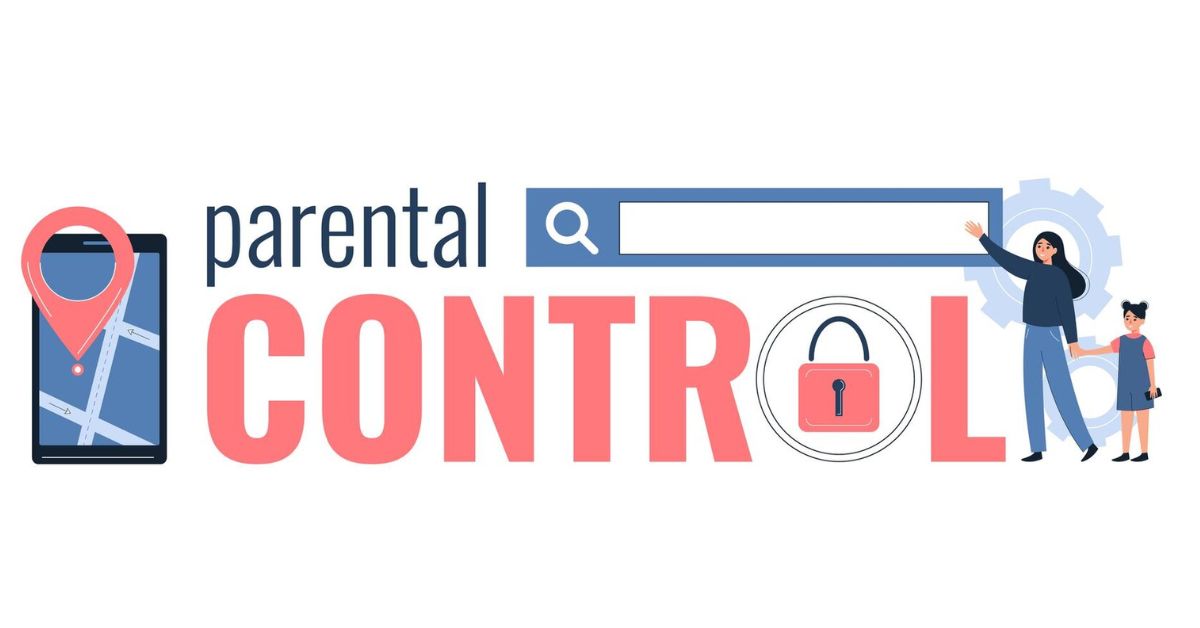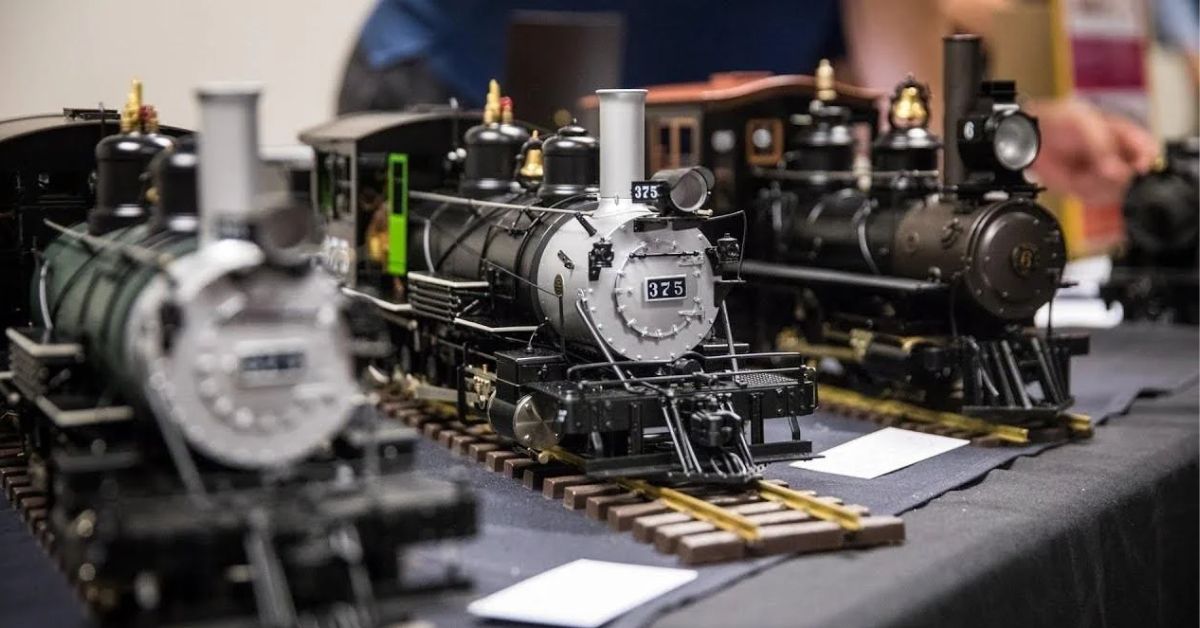How To
How to Access MyBookCave.com: A Step-by-Step Guide

Accessing how to access mybookcave.com can be a game-changer if you’re looking to expand your reading list and discover great books on a budget. Let’s take a deep dive into the website’s features, registration process, and tips to help you find books you’ll love.
What Is MyBookCave.com?
MyBookCave.com is a book promotion and discovery platform designed to connect readers with new books, often at discounted prices or even free. MyBookCave allows you to customize your reading experience by choosing your preferred genres and book types, tailoring recommendations to match your interests.
MyBookCave offers curated recommendations based on your reading preferences, making it easier to find books suited to your tastes. With free eBooks, deals, and premium content options, MyBookCave provides a comprehensive, cost-effective way to explore books across genres.
MUST READ: www.goodmooddotcom.com Hotels Category
Creating an Account on MyBookCave
Creating an account on MyBookCave is essential for accessing its full range of features. Follow these simple steps to set up your profile.
Step-by-Step Registration Process
- Visit MyBookCave.com: Start by navigating to the website on your desktop or mobile device.
- Click on “Sign Up”: You’ll typically find this option in the top-right corner.
- Provide Basic Information: Enter your name, email, and create a password.
- Verify Your Email: Check your inbox for a confirmation email from MyBookCave and click the link provided.
- Login: After verification, log in using your credentials.
Choosing Your Preferences
During registration, you’ll be prompted to select your genre and content preferences. These preferences ensure MyBookCave suggests books that align with your tastes.
Navigating the MyBookCave Interface
Once logged in, you’ll find a user-friendly interface with easy navigation. The main dashboard features sections for book recommendations, deals, and personalized reading suggestions.
Exploring Book Recommendations and Deals
How to access mybookcave.com recommendations include best-sellers, new releases, and hidden gems. The “Deals” section highlights limited-time offers, where you can often find discounted or free eBooks.
Understanding Book Preferences
MyBookCave allows you to specify both genre and content preferences, ensuring recommendations are tailored to your comfort level.
Setting Your Genre Preferences
Select your preferred genres from a wide array, including romance, mystery, fantasy, and non-fiction, to name a few. These choices determine the recommendations you’ll receive.
Selecting Content Rating Preferences
Content ratings let you filter books based on themes, language, and maturity levels. Options range from general (suitable for all) to adult (explicit themes).
Using MyBookCave’s Free eBook Feature
One of how to access mybookcave.com standout features is its free eBook offerings. Many authors offer their books for free for limited periods, allowing you to sample new works without a financial commitment.
How to Access MyBookCave’s Premium Features
While free content is available, MyBookCave also offers premium features for a monthly subscription. Premium members have access to exclusive deals and early access to popular titles.
Downloading Books from MyBookCave
To download a book, click on the title, then follow the prompts to either add it to your library or download it directly. Some books are available in multiple formats like ePub, Kindle, or PDF.
How to Use MyBookCave on Mobile Devices
For mobile access, open your device’s browser and navigate to MyBookCave.com. The site is optimized for mobile, and all features are available without needing an app.
Troubleshooting Access Issues on MyBookCave
If you’re having trouble accessing how to access mybookcave.com, consider these common fixes.
Common Login Problems
If you’re unable to log in, double-check your email and password. You can reset your password by clicking on the “Forgot Password” link.
Browser Compatibility Tips
For optimal performance, ensure you’re using an up-to-date browser like Chrome, Firefox, or Safari. Clear your browser cache if the website isn’t loading correctly.
Privacy and Security on MyBookCave
MyBookCave takes user privacy seriously, with a commitment to data protection and secure transactions. Always review privacy policies and adjust your account settings to control what information is shared.
Tips for Getting the Most Out of MyBookCave
- Sign up for Alerts: how to access mybookcave.com offers email alerts for new deals and free eBooks, keeping you updated on offers.
- Try Different Genres: Expand your reading horizons by exploring new genres from time to time.
- Follow Authors: Follow your favorite authors to receive updates on their latest releases and deals.
Conclusion
MyBookCave.com is an invaluable tool for book lovers, offering a wide array of free and discounted books, personalized recommendations, and an easy-to-use interface. Whether you’re an avid reader or just starting, MyBookCave makes discovering new books convenient and affordable.
FAQs
1. Can I access MyBookCave for free?
Yes, MyBookCave offers free registration and access to various free eBooks and deals. Premium memberships are optional.
2. What types of books are available on MyBookCave?
MyBookCave offers books across a variety of genres, including romance, thriller, sci-fi, and non-fiction.
3. Is there a mobile app for MyBookCave?
MyBookCave doesn’t have a dedicated app, but it is optimized for mobile access via your browser.
4. How do I change my genre preferences?
You can change your genre preferences by going to your account settings and updating your selections.
5. Are the books on MyBookCave DRM-protected?
Some books may have DRM, depending on the publisher. Be sure to check individual titles for DRM information before downloading.
How To
How to find dominatrix in your town: A Comprehensive Guide

Looking for a how to find dominatrix in your town in your town? Whether you’re curious or ready to explore the world of BDSM, finding a dominatrix can be an exciting journey. But how do you get started? This guide walks you through everything you need to know, from understanding your interests to locating trustworthy, professional dominatrix services near you. Let’s dive in!
Understanding What You Want
Before you begin your search, take a moment to identify what you’re looking for in a dominatrix. Are you interested in light domination, role-play, or something more specific? The BDSM world is diverse, and knowing your preferences helps ensure you connect with someone who can meet your needs.
Researching the BDSM Community
Joining a local BDSM community can be incredibly helpful. Many cities have BDSM groups that host regular events, meetups, and workshops. Engaging in these communities can provide valuable insight, help you learn about local practices, and make finding a dominatrix easier.
There are numerous forums and websites dedicated to BDSM and kink-friendly communities. Platforms like Reddit, FetLife, and specialized BDSM forums offer spaces to connect, learn, and even find local dominatrix services.
MUST READ: www.politicser.com Pepperboy News: A Deep Dive into Trending Political Coverage
Safety First: Essential Considerations
Safety is paramount when engaging in BDSM. Always understand the principles of consent, negotiation, and boundary-setting. Remember, BDSM is based on mutual respect, and all activities should be consensual and safe.
Privacy is also crucial. When connecting with someone new, be mindful of sharing personal information and respect the privacy of the dominatrix as well.
Certain online directories are specifically designed for finding dominatrix services. Websites like KinkBNB, Domina.ms, and others provide listings for professional dominatrices. However, take time to review profiles carefully, and look for verified accounts to avoid scams.
Exploring Social Media Platforms
Many dominatrices use social media platforms like Twitter, Instagram, and FetLife to share their services, events, and availability. Following these profiles can provide insight into the dominatrix’s style, values, and offerings. Look for professionalism in posts, and avoid profiles that seem overly promotional or lack detail.
BDSM events, workshops, and meetups can be fantastic opportunities to connect with local professionals and enthusiasts. Attending these events allows you to meet potential dominatrices in a safe, public setting and learn more about the community.
Joining BDSM-Specific Websites
Websites like FetLife cater to those interested in BDSM. By creating a profile on these platforms, you can network, connect, and learn from others who share your interests. Remember to approach others respectfully and engage in conversations that show you’re genuinely interested in learning and respecting the community’s norms.
Apps like Whiplr and KinkD are designed for people interested in kink and BDSM. These apps often allow you to filter searches based on location, making it easier to find a dominatrix in your area. Make sure to read reviews and check out profiles thoroughly to ensure authenticity.
Seeking Professional Services
Working with a professional dominatrix ensures a higher level of skill, safety, and discretion. Professional dominatrices typically have established protocols and a good reputation within the community. When possible, look for client testimonials or verified profiles.
Once you’ve found a dominatrix you’d like to contact, approach them with respect and professionalism. A polite, respectful message expressing your interest and asking about availability and services goes a long way. Avoid using overly explicit language or making assumptions about the experience.
Discussing Expectations and Limits
It’s essential to communicate your desires and boundaries clearly. Most professional dominatrices will have an initial conversation to discuss your preferences, boundaries, and any concerns. Don’t be afraid to ask questions—this helps ensure both of you are comfortable.
Prepare for your first session by familiarizing yourself with basic etiquette and ensuring you’re in the right mindset. Mentally prepare by understanding that this experience requires trust, open-mindedness, and a willingness to follow instructions.
Understanding Session Etiquette
During a session, always respect the how to find dominatrix in your town rules and guidance. This ensures a positive, enjoyable experience for both parties. Remember, your role is to follow their lead and respect their boundaries.
Conclusion
How to find dominatrix in your town in your town is an adventure that requires respect, discretion, and patience. By engaging with your local BDSM community, exploring online resources, and approaching professionals with courtesy, you can make meaningful connections and enjoy an exciting, safe BDSM experience. Embrace the journey and take the time to learn, communicate, and prepare.
FAQs
How can I ensure safety when meeting a dominatrix?
Always verify credentials, ask for references, and meet in public or reputable spaces initially. Safety protocols are essential for a positive experience.
Is it normal to have a discussion about boundaries before a session?
Absolutely. A professional dominatrix will discuss boundaries, expectations, and safety measures beforehand to ensure a consensual experience.
What should I avoid when contacting a dominatrix?
Avoid using explicit language or making assumptions. Approach with respect and keep initial messages polite and professional.
Can I find a dominatrix through social media?
Yes, many dominatrices use platforms like Twitter or Instagram. Look for professional profiles and avoid accounts that seem unverified or overly promotional.
READ MORE: CLICK HERE
How To
How Much Would Month to Month Bowling Alley Cost?

Bowling is more than just a sport; it’s a social experience, a fun way to bond with friends and family, and a unique venue for hosting events. How much would month to month bowling alley cost on a month-to-month basis, the cost can vary widely based on a number of factors. If you’re considering renting a bowling alley and wondering about the financials, this article will break down all the key elements that influence the price and give you an idea of what to expect.
What Is a Month-to-Month Bowling Alley Rental?
Renting a bowling alley on a month-to-month basis means you’re paying for the use of the facility for one month at a time, without being tied to a long-term lease. This type of rental offers more flexibility compared to yearly or multi-year contracts, making it an attractive option for people who need temporary access, such as for special events, tournaments, or business activities.
Month-to-month rentals can be particularly appealing for businesses that need space on a flexible basis. It’s also great for individuals or groups who only plan to use the space temporarily but want a reliable spot to enjoy the game regularly. Think of it as a gym membership for bowling enthusiasts—perfect for those who want consistent access without committing to a long-term contract.
MUST READ: Ufimski Aviation University: A Gateway to the Skies
Factors Affecting the Cost of Month-to-Month Bowling Alley Rental
When calculating the cost of renting a bowling alley on a month-to-month basis, several factors will influence the price. Let’s dive into the primary elements that affect rental fees.
One of the most significant factors in pricing is the location of the bowling alley. A bowling alley in a bustling urban area with high demand will likely be more expensive than one in a smaller, suburban town. Popular locations often charge more due to higher foot traffic, especially during peak seasons like holidays or weekends.
The size of the alley, including the number of lanes and the capacity to accommodate guests, plays a major role in pricing. A larger facility with more lanes and seating will generally cost more to rent than a smaller, more intimate venue. If you’re looking to host a large-scale event or party, expect the rental price to reflect the size and capacity needed.
Equipment and Amenities Provided
What comes with your rental? Does the alley provide high-quality bowling balls, shoes, and other gear? Some alleys include these as part of the rental fee, while others may charge extra. Amenities like food services, a bar, or entertainment systems may also add to the overall cost.
Prices can fluctuate depending on the time of year. For instance, demand is often higher during the holiday season, school vacations, or weekends, leading to increased prices. If you’re flexible with your rental period and can book during off-peak times (e.g., weekdays or non-holiday months), you may be able to negotiate a lower rate.
Duration of Rental Period
Even though you’re renting on a month-to-month basis, some venues may offer price breaks if you rent for multiple consecutive months. While a month-to-month rental is ideal for short-term use, booking for longer durations (3-6 months) could result in discounted rates.
Cost Breakdown
Now that we’ve covered the main factors influencing rental fees, let’s break down the different costs that may be included in your month-to-month bowling alley rental.
The primary cost is the rental fee itself, which can range from a few hundred to a few thousand dollars per month, depending on the factors mentioned above. Smaller alleys might charge around $1,000–$2,000 per month, while larger, high-end bowling venues could cost $5,000 or more.
Additional Costs (Cleaning, Maintenance, Staff)
Some bowling alleys include cleaning and maintenance costs in the rental fee, while others may charge extra. For example, if the alley needs to be cleaned or lanes need to be serviced during or after your event, these costs could add up. Some facilities also charge for the use of staff members, such as lane attendants or bartenders.
If you’re renting the alley for a special event, such as a birthday party, corporate gathering, or a league tournament, expect to pay additional fees for event coordination, catering, or decorations. These services are usually customizable and priced separately.
Many bowling alleys require renters to purchase event insurance, which protects both you and the venue in case of accidents or damages. This is an added cost that you’ll want to account for when planning your budget.
Average Pricing Range
Let’s look at some estimated prices for different types of bowling alley rentals.
Small Bowling Alleys
For small, neighborhood bowling alleys with just a few lanes, you might expect to pay around $1,000 to $3,000 per month. These are ideal for casual users or smaller events and gatherings.
Medium to Large Bowling Alleys
For medium-sized venues with more lanes and better amenities, prices typically range between $3,000 and $5,000 per month. This price would include things like a bar, better equipment, and more comfortable seating arrangements.
High-Demand Locations (Urban Areas vs. Suburban Areas)
Bowling alleys located in urban centers or highly sought-after tourist destinations can be significantly more expensive. In cities like New York, Los Angeles, or Chicago, expect prices to range from $5,000 to $10,000 or more per month, particularly during peak times.
Pros and Cons of Month-to-Month Bowling Alley Rentals
Pros:
Flexibility: Renters can adjust or cancel the rental based on their needs without being locked into a long-term contract.
No Long-Term Commitment: Ideal for short-term events, casual use, or businesses that need temporary space.
Potential for Discounts: Off-peak rentals or smaller alleys may offer more affordable prices.
Cons:
Price Fluctuations: Rental rates may vary based on demand and season.
Availability: High-demand locations might be booked well in advance, especially during busy periods.
How to Save on Month-to-Month Bowling Alley Rentals
If you’re hoping to save money on your month-to-month rental, consider these tips:
Book During Off-Peak Times: Weekdays and non-holiday months tend to be less expensive.
Negotiate Deals: Some bowling alleys may offer discounts for first-time renters or during off-peak hours.
Compare Different Venues: Don’t settle for the first bowling alley you find. Shop around to find the best rates and amenities.
Consider Long-Term Contracts: If you plan to use the space regularly, see if a longer-term commitment can provide a better deal.
Other Considerations Before Renting a Bowling Alley
Before committing to a bowling alley rental, make sure to consider other factors:
Staff and Equipment Availability: Ensure the alley provides enough staff and well-maintained equipment for your needs.
Venue Setup: Ask about the layout of the space and whether it fits your event’s requirements.
Accessibility: Check for adequate parking, public transportation options, and ADA accessibility.
Safety Regulations: Ensure the facility follows necessary safety and health protocols, especially for large events.
Conclusion
Renting a bowling alley on a month-to-month basis offers flexibility, convenience, and the opportunity to enjoy this fun activity without long-term commitments. However, the cost can vary widely depending on factors such as location, size, amenities, and seasonal demand. By understanding these factors and knowing how to negotiate or book during off-peak times, you can get the best deal on your rental.
Frequently Asked Questions (FAQs)
How much does a month-to-month rental typically cost?
A month-to-month rental can range from $1,000 to $5,000 or more, depending on the size of the bowling alley and its location.
What is included in the rental cost for a bowling alley?
Typically, the rental includes access to the lanes and basic equipment. Additional services, like staff, catering, or event coordination, may be extra.
Is it cheaper to book a bowling alley for a month-to-month basis versus booking a long-term contract?
Month-to-month rentals offer flexibility but may be more expensive in the long run. If you plan to use the space regularly, a long-term contract might be more cost-effective.
What factors influence the cost of renting a bowling alley?
Location, size, equipment, seasonal demand, and special event services all play a role in determining the rental cost.
Can I rent a bowling alley for private events on a month-to-month basis?
Yes, many bowling alleys offer month-to-month rentals for private events, allowing you to book for birthday parties, corporate events, and more.
READ MORE: CLICK HERE
How To
How to Set the Timing on an Accucraft Ruby

How to set the timing on a accucraft ruby locomotive is essential for smooth operation and optimal performance. This guide will walk you through every detail of the process to help your Ruby model run efficiently and stay in great shape. With these steps, you’ll be able to set the timing on your locomotive with confidence, even if you’re a beginner.
The Accucraft Ruby is a popular model steam locomotive cherished by hobbyists for its classic design and smooth operation. However, like any steam engine, the Ruby requires precise timing adjustments to run efficiently. Understanding and setting the timing on your Ruby can greatly improve its performance, reduce wear, and keep it running smoothly. Here’s a guide to help you get it right!
What is the Accucraft Ruby Locomotive?
The Accucraft Ruby is a 1:20.3 scale live-steam model locomotive that hobbyists and collectors appreciate for its attention to detail and high-quality build. It’s part of the Ruby line of engines, known for their durability, aesthetic appeal, and reliable steam-powered functionality.
MUST VISIT: VAPESPEN.COM
In steam locomotives, timing refers to the precise setting of valves and rods that control steam flow into the cylinders. Proper timing is crucial because it ensures that the steam enters and exits the cylinders at the right moments, delivering smooth and efficient power to the wheels.
Importance of Timing for Steam Locomotives
Correct timing in a steam locomotive is as vital as in a car engine. If the timing is off, the engine might run poorly, overheat, or consume more steam, affecting its performance. Proper timing extends the life of your Accucraft Ruby and provides an enjoyable, realistic operating experience.
Understanding the Basics of Timing
Timing controls when the steam enters and exits the cylinders, converting steam pressure into motion. In essence, it’s about ensuring that each stroke of the piston is smooth and synchronized with the movement of the wheels.
The key components affecting timing include the crank pins, valve gear, and eccentric rods. Adjusting these parts helps regulate the steam’s entry and exit timing, which impacts the locomotive’s speed, power, and efficiency.
Tools You’ll Need
Before diving into timing adjustments, gather these tools:
- Small screwdriver
- Tweezers or needle-nose pliers
- Hex wrench set
- Lubricant (for maintenance after timing)
- Ruler or caliper (for precise measurements)
How to Identify Timing Issues
Signs of Poor Timing
Poor timing can cause several noticeable problems, such as:
- Uneven or jerky motion
- Reduced power and speed
- Excessive steam consumption
- Unusual sounds from the locomotive
When to Check Timing on Your Ruby
Ideally, you should check the timing on your Ruby if you notice performance issues or after long storage periods. Routine timing checks also help prevent wear and tear.
Preparing Your Accucraft Ruby for Timing Adjustment
Always ensure your model is off and cooled down before working on it. Wear safety glasses, and have a steady workspace to prevent accidents.
Before adjusting the timing, check the locomotive for any loose parts, leaks, or worn components, which could affect the accuracy of your adjustments.
Step-by-Step Guide to Setting the Timing
Step 1: Aligning the Crank Pins
- Rotate the wheels until the crank pins are in their correct position, usually at a 90-degree angle to the frame.
- Align both sides evenly for consistency in movement.
Step 2: Adjusting the Valve Gear
- Locate the valve gear linkage and slightly loosen the adjustment screws.
- Move the linkage to adjust the valves so they align with the crank’s position.
- Tighten the screws carefully to hold the setting.
Step 3: Fine-Tuning the Eccentric Rods
- Adjust the eccentric rods to ensure they are in sync with the wheels and valves.
- Ensure there’s no excess slack in the rods, as this can impact timing accuracy.
Run the Ruby slowly to test the adjustments. The locomotive should move smoothly, without jerks, at both low and high speeds. Listen for any unusual sounds, which could indicate further adjustments are needed.
Troubleshooting Common Timing Problems
If your Ruby jerks or runs unsteadily, double-check the alignment of the crank pins and valve gear. Small adjustments often correct this issue.
Low speed could indicate the valves are not fully opening or closing at the right moments. Recheck the valve gear and eccentric rods for proper alignment.
Overheating may be due to excessive friction from poor timing alignment. Lubricate the moving parts and ensure no components are overly tight or loose.
Tips for Maintaining Correct Timing
- Regularly lubricate the moving parts to reduce friction.
- Store your Ruby in a cool, dry place to avoid rust or wear.
- Perform routine timing checks, especially if you use your locomotive frequently.
Conclusion
Setting the timing on an Accucraft Ruby locomotive can feel challenging at first, but with patience and practice, it becomes a straightforward task. Proper timing enhances the locomotive’s performance and longevity, ensuring smooth and enjoyable operation. Follow the steps above, and your Ruby will run as good as new!
Frequently Asked Questions
How often should I check the timing on my Ruby?
Every few months or whenever you notice performance changes.
Can I set the timing on my Ruby without special tools?
Basic tools are sufficient for most adjustments, but a caliper or ruler helps with precision.
What happens if the timing is slightly off?
Minor timing issues may cause jerky movement but can usually be corrected with fine adjustments.
Is it normal for the locomotive to slow down on tight curves?
Yes, slight speed reductions are normal on curves, but extreme slowing may indicate timing issues.
What should I do if my Ruby overheats after setting the timing?
Check for friction in the moving parts and ensure proper lubrication.
-

 LIFE STYLE3 months ago
LIFE STYLE3 months agoExploring the World: A Journey with myfavouriteplaces.org
-

 EDUCATION10 months ago
EDUCATION10 months agoλιβαισ: Unraveling the Cultural Enigma
-

 BUSINESS10 months ago
BUSINESS10 months agoRetra: Revolutionizing Workflow Management
-

 Health3 months ago
Health3 months agowww healthsciencesforumcom: Your Go-To Source for Reliable Health Information
-

 ENTERTAINMENT3 months ago
ENTERTAINMENT3 months agoHow Ollyhibs TikTok revolutionized sports industry
-

 TECHNOLOGY11 months ago
TECHNOLOGY11 months agoUnlocking the Potential: Exploring the Power of GPT66X
-

 HEALTH & FITNESS11 months ago
HEALTH & FITNESS11 months agoUnderstanding Blisterata: Causes, Symptoms, and Treatment
-

 VAPE9 months ago
VAPE9 months agoHush Absolute Vape: Elevate Your Vaping Experience










